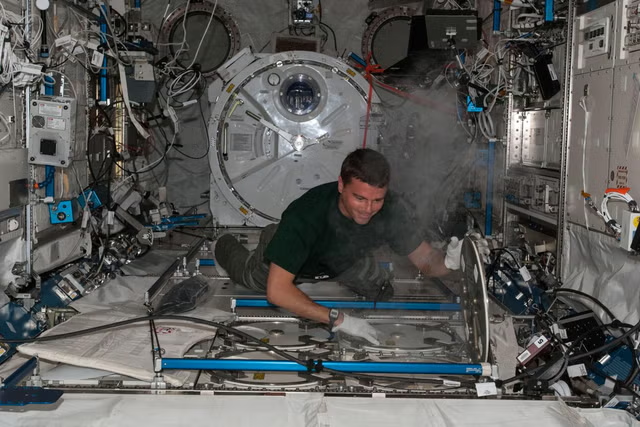For over two months, astronauts Barry Wilmore and Sunita Williams have been "stuck" in space after what was expected to be an eight-day mission.
In a press conference on Wednesday, NASA officials said the pair may not be able to return to Earth until 2025—but how might this extended space stay impact their health?
"Astronauts experience accelerated bone loss at an alarming rate—about 12 times faster than severe osteoporosis on Earth," Kyle Zagrodzky, founder and CEO of bone health clinic OsteoStrong, told Newsweek. "This rapid deterioration occurs because bones no longer bear the constant gravity load in space. As a result, density and strength diminish quickly, compressing years of potential osteoporosis into mere months."
"Osteoporosis increases fracture risk, often leading to life-altering injuries," Zagrodzky said. "Hip fractures pose a grave concern, as they can strip away independence and increase mortality risk."
Bone health is not the only concern for astronauts on extended missions.
"Muscle atrophy sets in as the body adjusts to weightlessness," Zagrodzky said. "Cardiovascular deconditioning is another concern, along with potential balance and coordination issues upon returning to Earth. There's also increased radiation exposure in space, which may elevate long-term cancer risks."
Wilmore and Williams blasted off into space on June 5 in a Boeing Starliner spacecraft, which was developed as a means of shuttling astronauts to and from the International Space Station. The pair safely docked at the ISS on June 6 and were originally scheduled to return to Earth on June 13. However, during their 25-hour flight, NASA engineers discovered several technical faults in the Starliner, including problems with its thrusters and small helium leaks.
In a press conference on Wednesday, NASA officials said that, if the Starliner is deemed unsafe to return to Earth, the astronauts could return on SpaceX's Crew Dragon in February 2025—although in a statement on August 2, Boeing said that it was confident the Starliner would return with Williams and Wilmore onboard.
Newsweek has contacted NASA by email for comment.
While all astronauts face health issues in space, the ISS is equipped with specialized exercise equipment that has been designed to help minimize these as much as possible.
"The Advanced Resistive Exercise Device, a custom treadmill, and a cycle ergometer are tools designed to counteract the atrophy of microgravity on bone and muscle," Zagrodzky said.
But what can astronauts teach us about osteoporosis and bone health here on Earth?
"The rapid bone loss and recovery cycles observed in astronauts provide a unique 'accelerated model' for studying osteoporosis, potentially fast-tracking the development of new treatments and prevention strategies," Zagrodzky said.
"This research provides valuable insights into osteoporosis prevention and treatment on Earth," he said. "For example, exercises developed to maintain astronauts' bone density in space could potentially be adapted to benefit individuals with limited mobility or those at high risk for osteoporosis."
Is there a health problem that's worrying you? Let us know via health@newsweek.com. We can ask experts for advice, and your story could be featured in Newsweek.
Disclaimer: The copyright of this article belongs to the original author. Reposting this article is solely for the purpose of information dissemination and does not constitute any investment advice. If there is any infringement, please contact us immediately. We will make corrections or deletions as necessary. Thank you.



